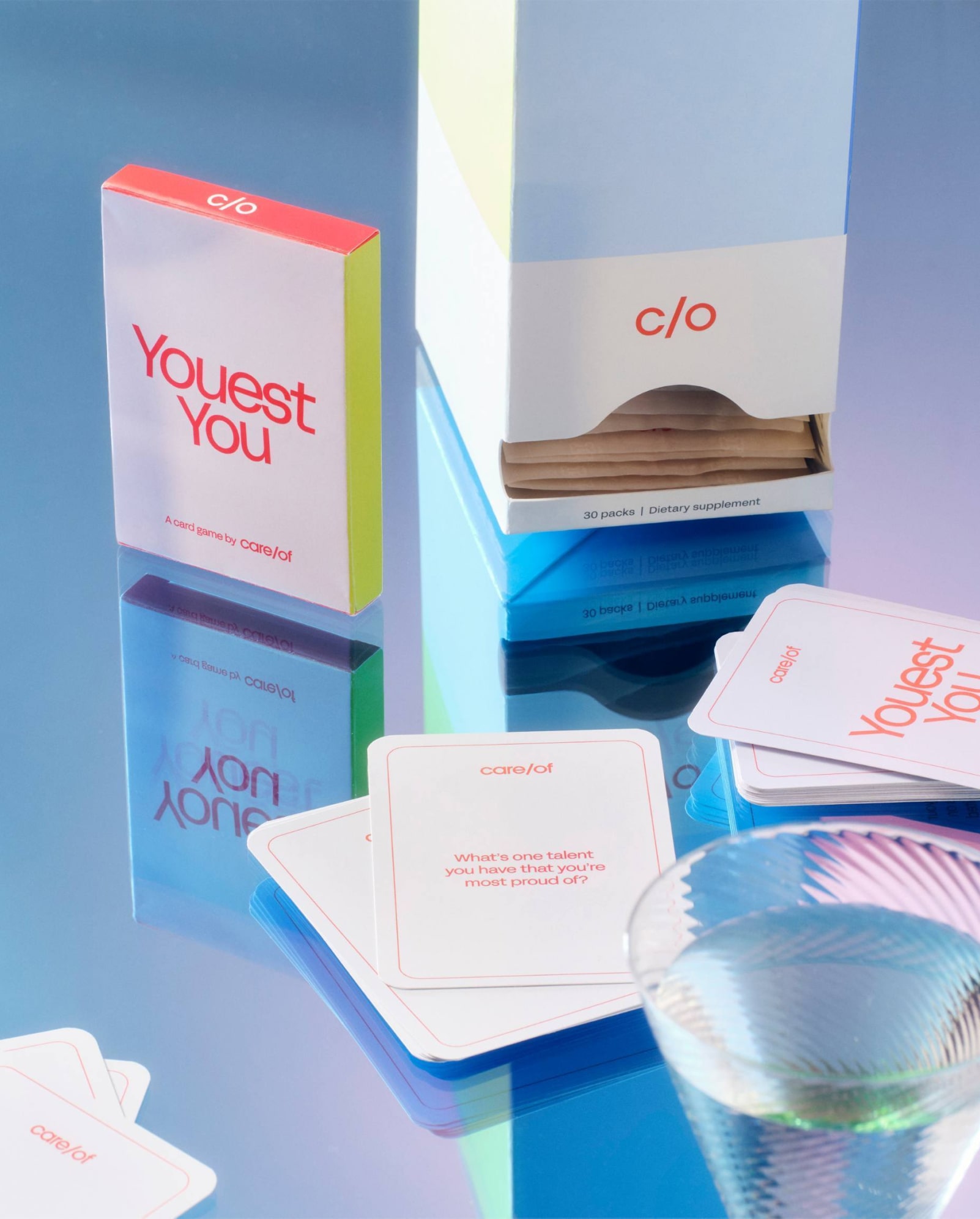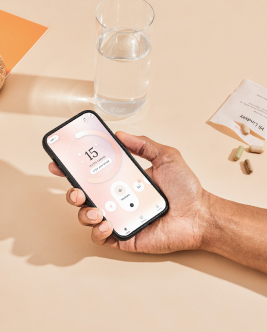science
Astaxanthin, Zeaxanthin, and Lutein: What’s the Difference, and Which Is Best for Your Goals?
On This Page

Astaxanthin, zeaxanthin, and lutein are important antioxidants in eye and skin health. Learn about their different uses and how to supplement for your goals.
What are the key differences between Astaxanthin, Zeaxanthin, and Lutein?
Astaxanthin, zeaxanthin, and lutein are more than just big words– these are powerful antioxidant compounds called carotenoids. Antioxidant compounds can help combat oxidative stress by neutralizing free radicals in the body.
You may have heard of another common carotenoid called beta-carotene, which helps give the orange color to carrots and other fruits and vegetables.
All carotenoids provide color to the foods containing them, which include many plants and algae, as well as seafood. These compounds all support eye health and cannot be made in the body, so we must get them from the foods we eat.
While all three carotenoids, astaxanthin, zeaxanthin, and lutein have benefits, including protection of eye health, they also have some key differences.
Astaxanthin
Astaxanthin is known for its powerful antioxidant properties. This compound can directly act as an antioxidant to clean up free radicals to prevent them from creating oxidative damage in the body. Astaxanthin also supports the antioxidant enzyme systems already already occurring in the body, boosting the body’s capability to minimize oxidative stress.
A standout feature of astaxanthin compared to the other carotenoids is its unique structure. Astaxanthin contains additional oxygen atoms which give it a distinctive red color. Food sources of naturally occurring astaxanthin include marine foods like salmon, shrimp, crayfish, krill, trout, and algae, which get their coral color from this compound.
Astaxanthin may help improve skin health and athletic performance, while lutein and zeaxanthin are particularly beneficial for eye health.
Zeaxanthin and Lutein
Zeaxanthin and lutein are the dominant antioxidants present in the human eye, accumulating up to 5 times more in the macular area of the eye’s retina compared to the peripheral retinal region. The macular area called the macula lutea, the structure in the eye responsible for visual acuity, or detailed central vision, gets its yellow color from the presence of zeaxanthin and lutein. Other carotenoids, such as beta-carotene and others, concentrate more in the peripheral retina, which support peripheral and night vision.
Zeaxanthin is concentrated in the fovea, located in the direct center of the eye, while lutein accumulates mostly in the perifoveal region surrounding the fovea. Because eyes are constantly exposed to light, a high concentration of these antioxidants in the eye is important for neutralizing free radicals created during the cellular reaction to light, called photoreception.
Both zeaxanthin and lutein provide protection against age-related blue light damage through free radical neutralization, as well as helping to absorb blue light. Exposure to blue light is a natural and normal occurrence, with sunlight being the largest source of blue light. The modern environment also contributes additional sources including fluorescent light bulbs and digital devices. Over a lifetime, we need zeaxanthin and lutein to help protect against the accumulation of phototoxic damage to our eyes.
Many of the same foods contain both zeaxanthin and lutein, including dark leafy vegetables, especially kale, as well as fruits and vegetables with a yellow or orange color, including cantaloupe, carrots, peppers, fish, egg yolks, corn and wheat. However, some foods are richer in one or the other; for example, zeaxanthin is found in high concentrations in goji berries and persimmons, while lutein is found in high concentrations in basil, parsley, and spinach.
Which is the most beneficial?
Astaxanthin, zeaxanthin, and lutein all have benefits, but astaxanthin comes out on top in terms of antioxidant capacity. In fact, astaxanthin has the highest antioxidant capacity of all natural compounds, many magnitudes higher than other antioxidants. Let’s discuss the benefits of astaxanthin, zeaxanthin, and lutein.
Benefits of astaxanthin
Astaxanthin can help with maintaining skin health and appearance, including promoting evenness in skin tone and helping keep skin moisturized. This compound also shows significant protective benefits against oxidative stress in skin due to UV damage. In one study, participants who took either 6mg or 12mg of astaxanthin did not have skin changes over 16 weeks, whereas the placebo group experienced significant changes from the same level of UV light exposure and environmental factors. Other research also shows that astaxanthin reduces the breakdown of collagen in the skin that can result from common environmental factors. These points suggest that astaxanthin may promote skin health by helping manage age-related skin deterioration.
Athletic recovery and performance can get a boost from astaxanthin supplementation. Animal studies have shown that astaxanthin can delay time to exhaustion during exercise. Studies of competitive cyclists have shown that astaxanthin can improve cycle times and help cyclists better use body fat as a fuel source during racing. Participants in this study took 12mg of astaxanthin over a 7 day period.
Even hormone balance can find support from astaxanthin supplementation. This antioxidant has been shown to support balanced levels of progesterone and estrogen hormones and promote healthier ovarian function.
Benefits of zeaxanthin and lutein
Since zeaxanthin and lutein have very similar chemical structures, they impart similar benefits in the body. A subtle difference in structure affects the transport and absorption of the two molecules, which may be why zeaxanthin accumulates more in the central fovea of the eye, whereas lutein accumulates in the surrounding region.
Both zeaxanthin and lutein are present in egg yolks. In fact, one study found that eating one egg a day over a 5 week period can promote healthy lutein and zeaxanthin levels in the body.
These two compounds act as the predominant antioxidants in the eyes, protecting eye health by helping to filter blue light and mitigate its oxidative effects. Both lutein and zeaxanthin are also present in the skin where they provide protection against skin damage induced by UV light.
Another benefit of lutein and zeaxanthin is their role in cognitive health. Both lutein and zeaxanthin along with beta-carotene are consistently associated with better cognition, including in centenarian populations, or people living to 100 years or older.
Meta-analysis of numerous studies in adults have shown that lutein is associated with cardiometabolic health. Those with higher dietary intake and blood concentrations of lutein were found to have better markers of metabolic health.
Which should I take?
While they each have slightly different structures, astaxanthin, zeaxanthin, and lutein are all beneficial to support the health of the eyes, brain, heart, and skin, though more research is needed to differentiate their use. But until then, be sure to include sources of these antioxidants in your diet.
Do Astaxanthin, Zeaxanthin, or Lutein have side effects?
While there are currently no established recommended levels of dietary intake for astaxanthin, zeaxanthin, or lutein, these supplements appear to have a good safety profile. There are very few side effects reported with these supplements, but more research is needed to understand the potential side effects at high doses.
It is best to keep to dosages used successfully in research. Most studies have found benefits and no adverse outcomes when using dosages up to 12mg astaxanthin, 6-20mg of lutein, and 2-10mg zeaxanthin. Research suggests that both zeaxanthin and lutein are safe at fairly high levels (of zeaxanthin, up to 0.75mg / kg body weight, and lutein, up to 1mg / kg body weight). These values equate to a safe daily intake of 53mg zeaxanthin and 60mg lutein for a person weighing 70kg, or about 154 pounds.
When should I consider taking an Astaxanthin supplement?
Expensive research including clinical trials has shown that astaxanthin’s antioxidant properties can support eye, heart, and skin health as well as help with athletic performance and recovery. If you are desiring to support these areas of your health, astaxanthin may benefit you.
Care/of’s astaxanthin supplement provides 6mg per serving of natural astaxanthin and is sourced from Himalayan algae.
Key takeaways
Astaxanthin, zeaxanthin, and lutein are powerful antioxidants with major protective benefits for eyes and skin. You can find astaxanthin from marine sources, like seafood and algae, and lutein and zeaxanthin are abundant in dark leafy green vegetables and other plant foods. Currently known safe daily doses include up to 12mg astaxanthin, 6-20mg of lutein, and 2-10mg zeaxanthin.



